William Blake
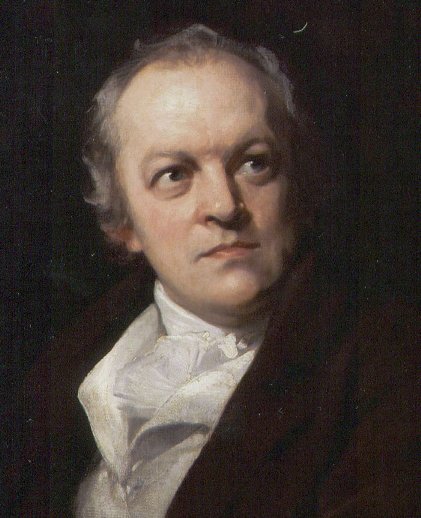
Illustrations for
Thomas Gray's
"The Descent of Odin"
[HOME]
[POPULAR RETELLINGS]
In the eighteenth century, Old Norse literature was the lore of antiquarians. That it is not so today among English readers is due to a line of writers, first of whom was Thomas Gray. In the thin volume of his poetry, two pieces bear the sub-title: "An Ode. From the Norse Tongue." These are "The Fatal Sisters," and "The Descent of Odin," both written in 1761, though not published until 1768. Gray called the pieces "dreadful songs," and so in very truth they are. Strength is the dominant note, rude, barbaric strength, and only the art of Gray saved it from condemnation. Today, with so many imitations from Old Norse to draw upon, we cannot point to a single poem which preserves spirit and form as well as those of Gray. Take the stanza: Horror covers all the heath, Clouds of carnage blot the sun, Sisters, weave the web of death; Sisters, cease, the work is done. The strophe is perfect in every detail. Short lines, each ending a sentence; alliteration; words that echo the sense, and just four strokes to paint a picture which has an atmosphere that whisks you into its own world incontinently. It is no wonder that writers of later days who have tried similar imitations ascribe to Thomas Gray the mastership. If Professor G. L. Kittredge had not gone so minutely into the question of Gray's knowledge of Old Norse, we might be pardoned for still believing with Gosse that the poet learned Icelandic in his later life. Even after reading Professor Kittredge's essay, we cannot understand how Gray could catch the metrical lilt of the Old Norse with only a Latin version to transliterate the parallel Icelandic. We suspect that Gray's knowledge was fuller than Professor Kittredge will allow, although we must admit that superficial knowledge may coexist with a fine interpretative spirit. has already been said that only antiquarians had knowledge of things Icelandic in Gray's time. Most of this knowledge was in Latin, of course, in ponderous tomes with wonderful, long titles; and the list of them is awe-inspiring. In all likelihood Gray did not use them all, but he met references to them in the books he did consult. Professor Kittredge mentions them in the paper already quoted, but they are here arranged in the order of publication, and the list is lengthened to include some books that were inspired by the interest in Gray's experiments. —Conrad Hjalmar Nordby, The Influence of Old Norse Literature Upon English Literature (1901). |
|
Illustrations by William Blake for "The Descent of Odin" by Thomas Gray (1761) |
 1. The Serpent Who Girds the Earth |
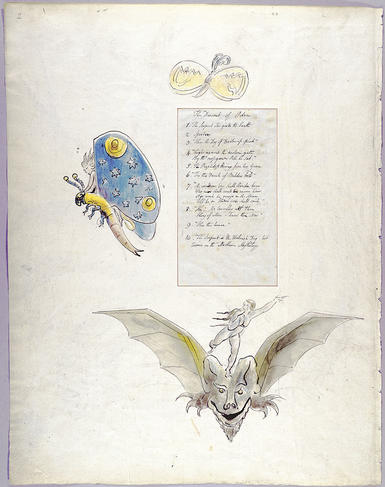 2. Spectres (Table of Contents) |
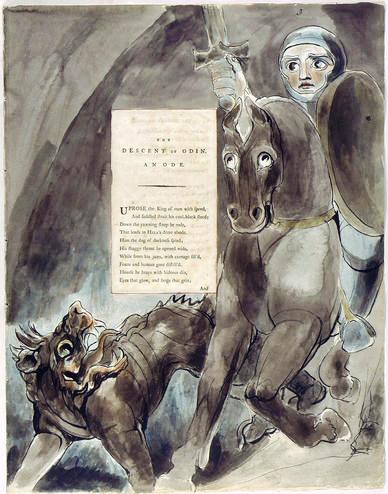 3. "Him the Dog of Darkness Spied." |
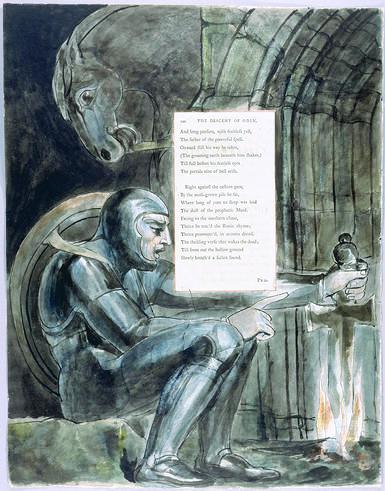 4. "Right across the eastern gate By the moss grown Pile he sat" |
 5. The Prophetess Rising from her Grave. |
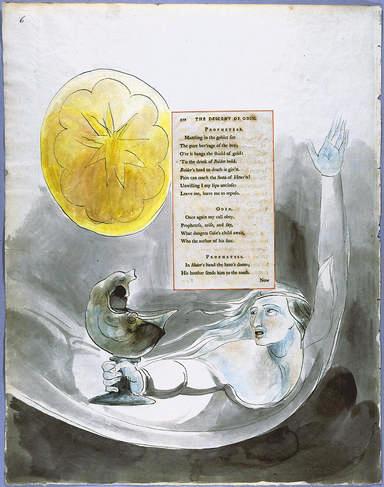 6. "Tis the Drink of Balder Bold." |
 7. "A wondrous boy shall Rinda bear Who ne'er shall comb his raven hair Nor wash his visage in the stream Til he on Hoder's cor'se shall smile." |
 8. "Ha! No traveller art thou King of Men I know thee Now!" |
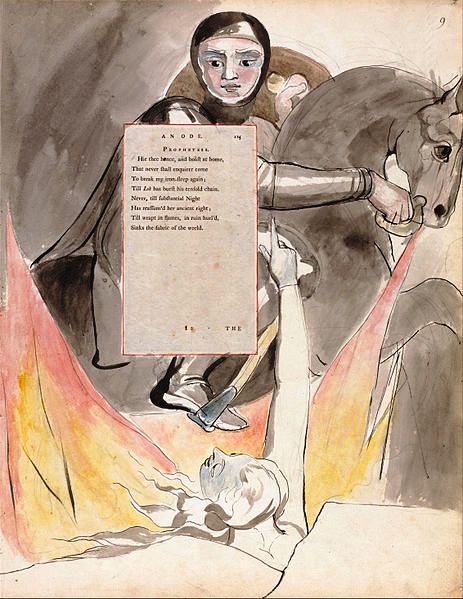 9. "Hie thee hence." |
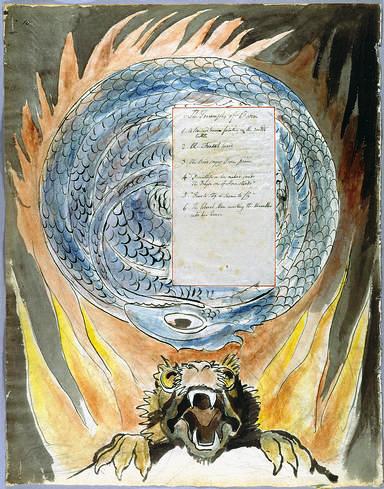 10. The Serpent and the Wolvish Dog. Two Terrors in the Northern Mythology. |
[POPULAR RETELLINGS]